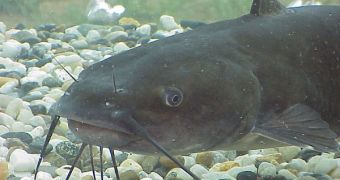Since ancient times, people have known that some insects and small animals produce venom. Over the years, they have learned how to use these chemicals to their advantage, either by dipping their spears and arrows in the stuff, or by using it for therapeutic purposes. With the advent of modern technologies, scientists have conducted an exhaustive research into these venoms and learned as much as they could from them. But very few bothered to do the same with fish venoms. This is precisely why scientists at the University of Michigan, in the United States, did exactly that.
The principal investigator on the research has been UM expert Jeremy Wright. His exhaustive study is published in the latest issue of the open access journal BMC Evolutionary Biology. The work contains a compared analysis of the venoms and venom glands present in some 158 catfish species, making this the largest such effort ever undertaken. The work has the potential to clear a number of mysteries related to fish and their ability to stun or kill their prey using a potent cocktail of toxins and other chemicals. Creatures such as jellyfish and stingrays are renowned for their venoms, but fish have remained largely unnoticed, for some reason.
“I used histological and toxicological techniques to elucidate the diversity and distribution of venomous catfish. I found that at least 1,250, and possibly over 1,600 species of catfish may be venomous, a number far greater than any previous estimate of venomous catfish diversity,” the expert says of his study. He reveals that most catfish that have venom carry it in special glands, located atop sharp, bony spines. These structures are located along the leading edge of the dorsal and pectoral fins, and can become locked into place if the creature feels in any way threatened.
Venom is delivered through a fairly simple approach. As soon as the sting penetrates the body of the prey or predators, it bursts the venom gland, releasing the chemicals into the wound. The poisons have the ability to cause a wide range of effects, from severe pain and ischemia to muscle spasms and respiratory distress. “Further examination of the chemical composition of the venoms will provide valuable insight into the mechanisms and potential selective factors driving venom evolution in fishes,” Wright believes.

 14 DAY TRIAL //
14 DAY TRIAL //